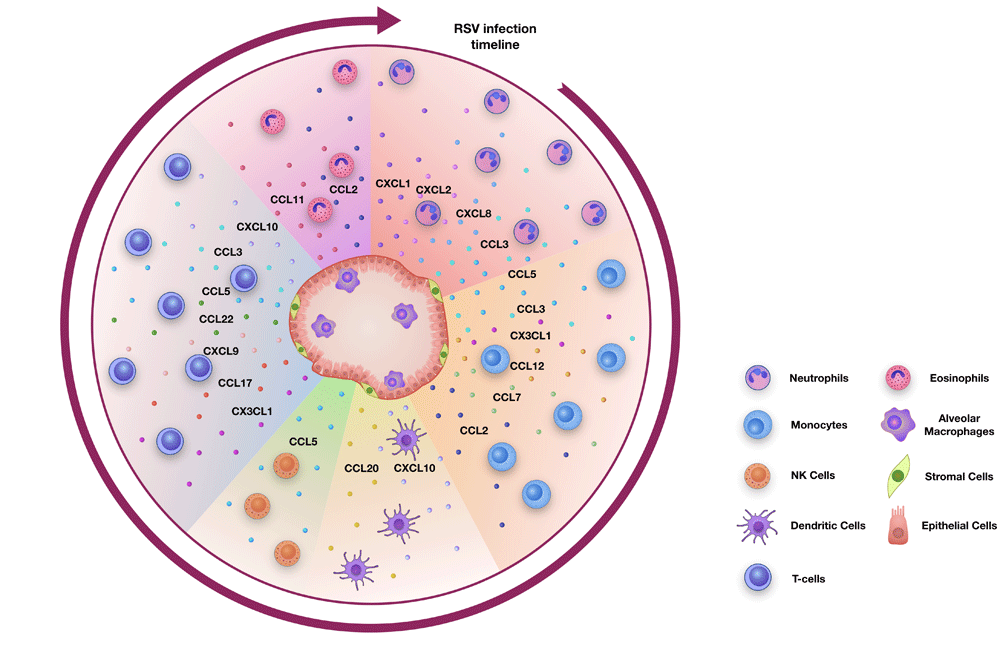Human Rhinovirus Infections
Stephen B. Greenberg
More than 50% of all common colds are caused by rhinoviruses. In infants and young children, human rhinovirus (HRV) is associated with many cases of acute otitis media and sinusitis. HRVs are members of the Picornaviridae family and positive-sense, single-stranded ribonucleic acid (RNA) viruses with icosahedral symmetry. Serotypes of HRVs are based on amino acid differences in the four capsid proteins. The pathogenesis of HRV infections is through infection of the upper respiratory tract. After deposition of HRV in the eye or nose, there is attachment to host cell epithelium. When tracheal epithelial cells were infected simultaneously with HRV and Streptococcus pneumoniae, there was increased adherence of the streptococci.
Respiratory infections
Noël Lampron
Respiratory tract infections, including pneumonia, are among the commonest causes of death worldwide. Contaminated oropharyngeal secretions are often aspirated into the lower respiratory tract. Although aspiration of oropharyngeal secretions is common, the host defense mechanisms are usually able to clear potential pathogens and thus prevent parenchymal infections. A significant part of normal host defenses against pulmonary infection relates to the anatomical and mechanical barriers provided by the upper respiratory tract. From the nasopharynx to the distal terminal bronchiole, the inner surface of the respiratory tract is lined with a pseudostratified ciliated epithelium interspersed with secreting cells (goblet cells) and other cells such as the dendritic cells. The respiratory epithelial cells are also the source of powerful antimicrobial peptides such as the cathelicidins and human B defensins that can act as chemokines at the level of the T lymphocytes and dendritic cells.
Respiratory tract infections
Gina Johnson, Ian Hill-Smith, Chirag Bakhai
Cough is a very common problem; other symptoms may accompany it and help to make a diagnosis. The patient may seek help because the cough is persistent, interferes with sleep or because of anxiety that infection is ‘going to the chest’. Most acute coughs are due to the common cold or acute bronchitis; although acute bronchitis may sometimes be caused by bacteria, antibiotics provide little benefit in this condition unless there is co-morbidity. Quite often a friend or a relative has suggested that the patient should seek medical help. Mothers may fear that their children may choke in the night. Cough medicines for chesty coughs can exacerbate cough. Heart failure may cause a persistent cough, with fine crackles at both lung bases and a typical history of being worse when lying down and producing frothy, non-purulent sputum.
Pharmacological management of human respiratory syncytial virus infection
Published in Expert Opinion on Pharmacotherapy
Alexis M. Kalergis, Jorge A. Soto, Nicolás M. S. Gálvez, Catalina A. Andrade, Ayleen Fernandez, Karen Bohmwald, Susan M. Bueno
Respiratory syncytial virus infection: why does disease severity vary among individuals
Published in Expert Review of Respiratory Medicine
Alireza Tahamtan, Saeed Samadizadeh, Mostafa Rastegar, Britt Nakstad, Vahid Salimi
Current perspectives on respiratory syncytial virus infection
Published in Postgraduate Medicine



